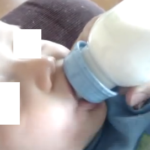Edwards’ syndrome is a genetic disease and is also known as Trisomy 18. In this, an affected person has a third copy of substances from chromosome 18, in place of the usual 2 copies. This disorder is 3 times more common in females than males. The syndrome occurs due to the presence of additional substance in chromosome 18, which obstructs with the usual development.
Edwards’ syndrome is a chromosomal anomaly identified by the occurrence of an additional copy of inherited substance on the chromosome 18, sometimes in parts and at times in whole. Generally, the occurrence of extra chromosome happens prior to conception. The results of the additional copies can differ immensely. The severity of adverse effects and symptoms depend on the family history of the condition, chance, and the level/amount of the additional chromosomal materials.
A good egg is made of individual chromosomes, each one of which contribute to the twenty-three pairs of chromosomes required to develop a cell with forty-six chromosomes. The process of egg development can lead to formation of an additional chromosome, increasing its number from twenty-three to twenty-four. Insemination by sperm or fertilization of eggs that has an additional chromosome causes trisomy, which means 3 prints of a chromosome instead of 2.
A meiotic nondisjunction event causes this syndrome. With nondisjunction, an egg cell or a sperm cell is created with an additional copy of chromosome 18. The resultant egg cell or sperm cell therefore has twenty-four chromosomes. When joined with a normal sperm cell or egg cell from the other parent, the embryo gets forty-seven chromosomes, with 3 prints of chromosome 18.
Mild cases of Edwards’ syndrome may also occur when only few of the cells in the body have an additional copy of chromosome 18. This condition is referred to as mosaic Edwards’ syndrome.
Sometimes, a part of chromosome 18 becomes translocated before or after conception. Thus, an affected person has 2 copies of chromosome 18, as well as additional substance from chromosome 18 attached to another chromosome. Due to this, an affected individual suffers from partial trisomy of chromosome 18, and the defects are usually less severe in comparison to full blown Edwards’ syndrome. It is a rare form of Trisomy 18.
In a majority of cases, all the cells in an affected body has additional chromosome 18. In about 5 per cent of those with this syndrome, only a few cells in their body are influenced by the additional chromosome, which is called as ‘mosaic trisomy 18’. The seriousness of the disorder depends on the number of cells influenced by the additional chromosome 18.
Edwards’ syndrome occurs by chance during the egg development process, which is known as nondisjunction. It results in development of copies of chromosome 18, causing formation of additional chromosomes. The cause of accompanying defects due to presence of extra chromosomal material is not known. Still, specialists feel that it obstructs in the interaction of different genes, thereby leading to mutilations.
Symptoms of Edwards’ syndrome
Signs and symptoms vary of Edwards’ syndrome from one child to another. Some of the symptoms are as follows:
- Upturned nose
- Cleft in iris
- Crossed legs
- Small jaw
- Undescended testicle
- Feet with a rounded bottom
- Unusually shaped chest
- Delay in growth and development
- Underdeveloped fingernails
- Low birth weight
- Webbing of second and third toe
- Clenched hands
- Widely placed small eyes with narrow eyelid folds
- Drooping of upper eye lids
- Low-set ears
- Under developed or missing thumbs
- Mental deficiency
- Structural malfunctions of heart, brain, genitals, kidneys, digestive tract; causing problems in breathing, feeding, etc.
- A small head
- Umbilical hernia
- Diastasis recti
- Infections in lungs and in urinary system
Causes of Edwards’ syndrome
A meiotic nondisjunction occurrence causes Edwards’ syndrome. The reason for the anomalous features accompanying the presence of extra chromosomal material is not known. Still, medical experts deem that it obstructs in the interaction of different genes and leads to injuries.
People belonging to all races and ethnicities can get affected by Edwards’ syndrome. The chances of this disorder increase with a rise in the maternal age. Statistics show that one child in six thousand births is affected by this syndrome and about eighty percent of children belonged to female category. Also, most affected children pass away before birth.
Treatment of Edwards’ syndrome
Sign and symptoms, genetic examinations and ultrasound tests during the pregnancy can assist in diagnosing the syndrome.
There is no cure for Edwards’ syndrome. However, treatments are given to minimize the effects of symptoms. The treatment options include the following:
- Occupational therapy and physiotherapy for children suffering from limb disorders.
- Intake of good and nutritious food
- Providing assistance for enhanced functioning of the digestive track and heart
- Treating illnesses which occur regularly
- If necessary, use of nasogastric tube alternatives for children with feeding problem.
- Giving emotional support to parents, as only some children affected by Edwards’s syndrome survive beyond 1 year.
Life Expectancy
Almost 1/2 the number of children affected by this disorder do not live beyond seven days. Only some patients live till the teenage years, along with all associated deformities and disorders.
